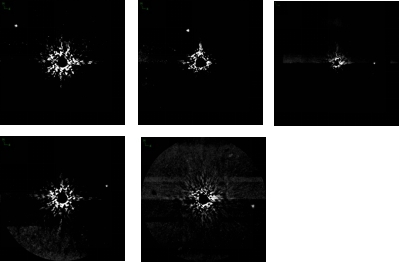
The exoplanet detection group led by Prof. REN Deqing and Prof. ZHU Yongtian from the Nanjing Institute of Astronomical Optics & Technology (NIAOT) of the Chinese Academy of Sciences carried out the scientific observation on the 5-meter Hale telescope of Palomar observatory in January, 2019.
Taking advantage of the PALM-3000 adaptive optics system of the Hale telescope, the researchers observed tens of targets and five new sub-stellar companion candidates were discovered. They found that these companion candidates have the imaging contrasts between 10-3 and 10-4, comparing to their host stars (Figure).
The group also detected six new binary star systems during the observation.
It is the first time that astronomers discovered exoplanet candidates through middle-aperture telescope in recent years, which verifies the roadmap proposed by the NIAOT group that middle size telescopes can be effectively used for imaging exoplanets.
The NIAOT group will continue to analyze the proper motions of the five new sub-stellar companion candidates. Once they are confirmed as real companions of their host stars, the group will further estimate the physical properties of these candidates to identify whether they are exoplanets or brown dwarfs.

Figure. The 5 new sub-stellar companion candidates were discovered by NIAOT group, supported by TAP. The observing data were processed by the novel algorithm developed by NIAOT group, which is optimized for equatorial telescope. (Image by NIAOT)

86-10-68597521 (day)
86-10-68597289 (night)

52 Sanlihe Rd., Xicheng District,
Beijing, China (100864)

